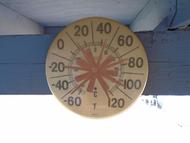Temperature and Anomalies
- By:
- Edward A. Reid Jr.
- Posted On:
- Oct 17, 2017 at 6:24 AM
- Category
- Climate Change
Recently, there has been renewed discussion of absolute temperatures and temperature anomalies in climate science. This discussion is made more complex by the fact that “there is no universally accepted definition for Earth’s average temperature”; and, by that fact there is also no universally accepted definition for the earth’s average temperature anomaly.
I have written here previously about temperature measurement issues; and, about their effects on temperature anomalies. Global temperature measurement is confounded by numerous issues, including: measurement instrument and enclosure changes; measuring station relocation; changes in the area surrounding the measuring station; areas with sparse or non-existent measuring stations; and, missing station data. In addition, an internet search reveals no links to information regarding the periodic recalibration of the measuring instruments used to measure global near-surface temperatures.
Global temperature history is further confounded by the fact that the actual temperature measurements are “adjusted” for a variety of reasons; and, by the fact that the “adjusted” temperature measurements are periodically subject to “reanalysis”, which changes the previously recorded “adjusted” temperatures. These “reanalysis” efforts are conducted by numerous agencies, resulting in varying reanalysis results. These “adjustment” and “reanalysis” efforts lead to questions regarding the validity of the global temperature record.
Therefore, any calculation of global average near-surface temperature is based on estimates of what the measured temperatures might have been, had they been measured timely at properly selected, calibrated, sited, installed, and maintained temperature measuring instruments. The calculations must also account for changes in the number and location of active measuring stations; and, changes in the characteristics of their surroundings. The agencies which calculate global average near-surface temperature claim precision of +/-0.5oC for their calculations, which is greater than half the magnitude of the calculated global average near-surface temperature change over the period of the instrumental temperature record.
Climate science typically focuses on temperature anomalies, rather than absolute temperatures. This approach is largely based on the assumption that, while the actual temperature measurements might be inaccurate, the differences between measurements taken at those stations over time are more accurate, since the measurement instruments and stations are assumed to be unchanged over the measurement period. However, the continuing need to “adjust” the temperature measurements and the periodic need to perform “reanalysis” of the “adjusted” temperature measurements might cause one to question that assumption.
The agencies which calculate the global near-surface temperature anomalies claim precision of +/-0.01oC. To put this claim in perspective, it is essential to understand precisely what the calculated anomaly represents. The anomaly is the calculated difference between the average of the “adjusted” and “reanalyzed” global average near surface temperatures over a reference 30 year base period and the “adjusted” global average near-surface temperature in the current period. This is typically either a month-to-month or a year-to-year comparison.
The situation is further complicated by the fact that the agencies which calculate the global average near-surface temperature anomaly use different base periods as their reference; and, they select separately from the available temperature measurements and then perform their own “adjustments” to those measured temperatures. In one case (NASA GISS), the agency also “infills” missing temperature measurements with synthetic estimated temperatures.
It is hardly surprising that there is renewed discussion of the accuracy of absolute temperatures and temperature anomalies in climate science. It is long past time to establish “tiger teams” to investigate all aspects of these processes.


